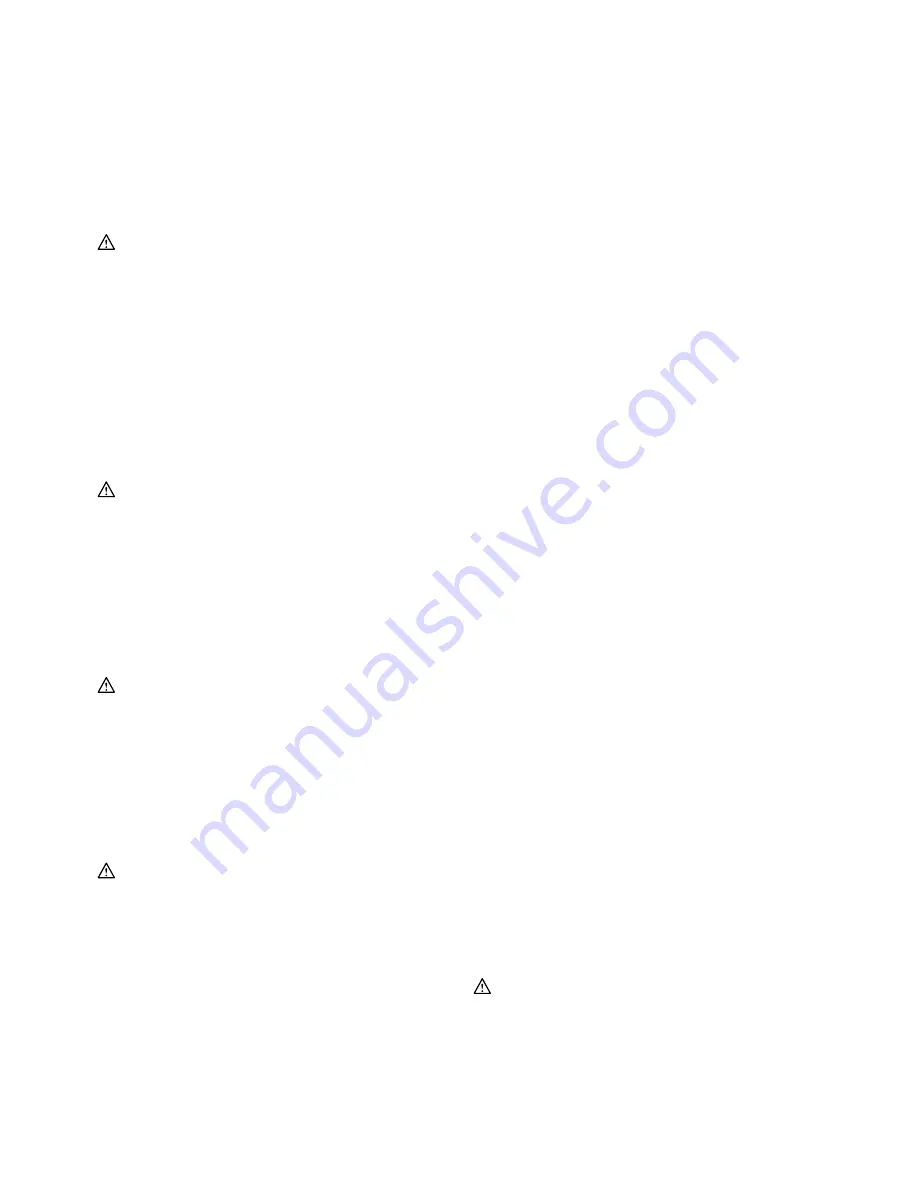
15
With the saw chain running, saw into the wood, using
the rear handle to raise the saw and the front one to
guide it. Use the spike bumper as a pivot.
Continue the cut by applying slight pressure to the front
handle, easing the saw back slightly. Move the spike
bumper further down the timber and raise the front
handle again.
When making several cuts, switch the chain saw off
between cuts.
CAUTION:
•
If the upper edge of the bar is used for cutting, the
chain saw may be deflected in your direction if the
chain becomes trapped. For this reason, cut with
the lower edge, so that the saw will be deflected
away from your body.
Fig.23
Cut wood under tension on the pressure side (A) first.
Then make the final cut on the tension side (B). This
prevents the bar from becoming trapped.
Fig.24
Limbing
CAUTION:
•
Limbing may only be performed by trained persons.
A hazard is presented by the risk of kick-back.
When limbing, support the chain saw on the trunk if
possible. Do not cut with the tip of the bar, as this
presents a risk of kickback.
Pay particular attention to branches under tension. Do
not cut unsupported branches from below.
Do not stand on the felled trunk when limbing.
Burrowing and parallel-to-grain cuts
CAUTION:
•
Burrowing and parallel-to-grain cuts may only be
carried out by persons with special training. The
possibility of kickback presents a risk of injury.
Fig.25
Perform parallel-to-grain cuts at as shallow an angle as
possible. Carry out the cut as carefully as possible, as
the spike bumper cannot be used.
Felling
CAUTION:
•
Felling work may only be performed by trained
persons. The work is hazardous.
Observe local regulations if you wish to fell a tree.
Fig.26
−
Before starting felling work, ensure that:
(1) Only persons involved in the felling operation
are in the vicinity;
(2) Any person involved has an unhindered path of
retreat through a range of approximately 45 °
either side of the felling axis. Consider the
additional risk of tripping over electrical cables;
(3) The base of the trunk is free of foreign
objects, roots and ranches;
(4) No persons or objects are present over a
distance of 2 1/2 tree lengths in the direction
in which the tree will fall.
−
Consider the following with respect to each tree:
•
Direction of lean;
•
Loose or dry branches;
•
Height of the tree;
•
Natural overhang;
•
Whether or not the tree is rotten.
−
Consider the wind speed and direction. Do not
carry out felling work if the wind is gusting strongly.
−
Trimming of root swellings: Begin with the largest
swellings. Make the vertical cut first, then the
horizontal cut.
Fig.27
−
Cut a scarf: The scarf determines the direction in
which the tree will fall, and guides it. It is made on
the side towards which the tree is to fall. Cut the
scarf as close to the ground as possible. First
make the horizontal cut to a depth of 1/5 -1/3 of
the trunk diameter. Do not make the scarf too
large. Then make the diagonal cut.
−
Cut any corrections to the scarf across its entire
width.
Fig.28
−
Make the back cut a little higher than the base cut
of the scarf. The back cut must be exactly
horizontal. Leave approximately 1/10 of the trunk
diameter between the back cut and the scarf.
The wood fibers in the uncut trunk portion act as a
hinge. Do not cut right through the fibers under
any circumstances, as the tree will otherwise fall
unchecked. Insert wedges into the back cut in time.
−
Only plastic or aluminum wedges may be used to
keep the back cut open. The use of iron wedges is
prohibited.
−
Stand to the side of the falling tree. Keep an area
clear to the rear of the falling tree up to an angle of
45 ° either side of the tree axis (refer to the " felling
area " figure). Pay attention to falling branches.
−
An escape path should be planned and cleared as
necessary before cuts are started. The escape
path should extend back and diagonally to the rear
of the expected line of fall as illustrated in figure.
Fig.29
MAINTENANCE
CAUTION:
•
Always be sure that the tool is switched off and
unplugged before attempting to perform inspection
or maintenance.
•
Always wear gloves when performing any
inspection or maintenance.
RAMIRENT
Summary of Contents for UC4550A
Page 119: ...119 R A M I R E N T ...
















































